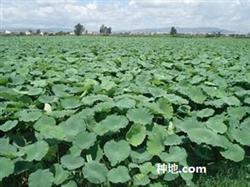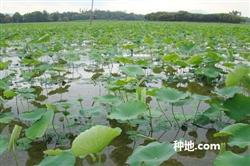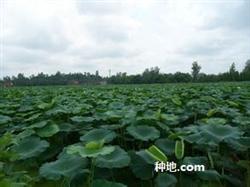How to manage after planting lotus root?

How to manage after planting lotus root? Do you have an introduction to the main management points of lotus root in the middle and later period: first, weeding, picking leaves and picking flowers. Before the lotus leaf is closed, weeding is carried out combined with fertilization, and the weeds are pulled out and stuffed into the mud under the lotus root head as fertilizer. About 1 month after planting, the floating leaves are withering and should be removed in time. 5 or 6 standing leaves are closed, and the early lotus root begins to sit on the lotus root. It is not suitable to go to the field to weed, so as not to damage the lotus root. At this time, weeding should be carried out on both sides of the rolled leaves. Lotus root for the purpose of picking lotus root, flowering and seed consumption of nutrients, if there are buds should be twisted, can not be broken, lest Rain Water invade and cause rot. Second, topdressing. Lotus root likes fertilizer, fertilizer is generally based on base fertilizer, topdressing only accounts for 30% of the whole growth period, planting close harvest early to apply more fertilizer. After the discharge of lotus root, the lotus root was fertilized twice, and for the first time, when 6-7 lotus leaves were born, 1000~1500kg was applied in feces and urine every 667m2. For the second time, the fertilizer of promoting lotus root was applied at the beginning of lotus root formation, and 1500~2000kg was applied in human feces and urine every 667m2. Fertilization should be in sunny and windless weather, not in the hot sun, each fertilization should be applied in the shallow paddy field, when the fertilizer is absorbed into the soil, and then irrigated to the original depth, the lotus leaves should be washed clean after topdressing. Third, water level regulation. The field lotus root can freely control the water level, maintain shallow water from more than ten days after discharge to the budding stage, increase the soil temperature and promote germination. With the vigorous growth of standing leaves and branches, the water layer is gradually deepened to 12~15cm. In the period of sitting lotus root, the shallow water level should be released one month before harvest to promote lotus root formation. Fourth, turn the lotus root. During the vigorous growth period of lotus root, the lotus whip grows rapidly. when the rolled leaf is 1m away from the edge of the field, in order to prevent the head of lotus root from crossing the ridge of the field, the head of lotus root close to the edge of the field should be transferred to the field at any time when weeding is done. If the weather is bad and the growth is slow, the head of lotus root close to the edge of the field should be transferred to the field every 2-3 days. Turn the head should be carried out at noon when the stems and leaves are soft, the lotus root head is very tender, when turning, the joint should be held up together, and then pressed with soil. Fifth, cure diseases and insect pests. Lotus root diseases and insect pests are generally not serious. The disease is mainly caused by rot, the leaves turn yellow in mild cases, and the diseased plants wither and die in severe cases. Insect pests include aphids and Spodoptera litura, which can be treated with 50% wettable aphid powder and 90% refined trichlorfon solution respectively. Click to see more lotus root planting techniques click to see more vegetable planting techniques
- Prev

How to fertilize lotus root planting?
How can pollution-free planting lotus root produce high yield? How to manage the pollution-free planting of lotus root can refer to the following techniques: first, select low-wet fields with convenient drainage and irrigation, and the soil is better with yellow mud or green mud. Second, fine soil preparation, the application of sufficient fertilizer 1, in order to improve soil fertility, green manure can be taken to press green, that is.
- Next

How to prevent and cure the common diseases of lotus root?
How to prevent and cure the common diseases of lotus root? The common diseases of lotus root are: first, lotus root brown spot: it is a common leaf disease of lotus root, which produces light brown spots on the leaves and makes the diseased leaves withered locally. Prevention and control methods: reasonable close planting to ensure ventilation and light in the lotus root field; appropriate application of phosphorus and potassium fertilizer.
Related
- Where is it suitable to grow horseradish in China? it is expected to see the middle altitude horseradish in Alishan.
- How to prevent tomato virus disease reasonably? (Control methods included)
- Many people like to plant towel gourd on the balcony. What are the main points of this method and management?
- What crops can chili peppers be mixed with?
- Fertilization techniques and matters needing attention in Tomato
- What are the grafting techniques for peach seedlings in spring?
- Harm and control methods of root swelling disease of Chinese cabbage
- What are the pests of sweet potatoes? How to prevent and cure it?
- Symptoms, causes and Control methods of navel Rot in Tomato
- The cause of "Cucumber rotten bibcock" in Farmers' planting Cucumber and its Control Plan

